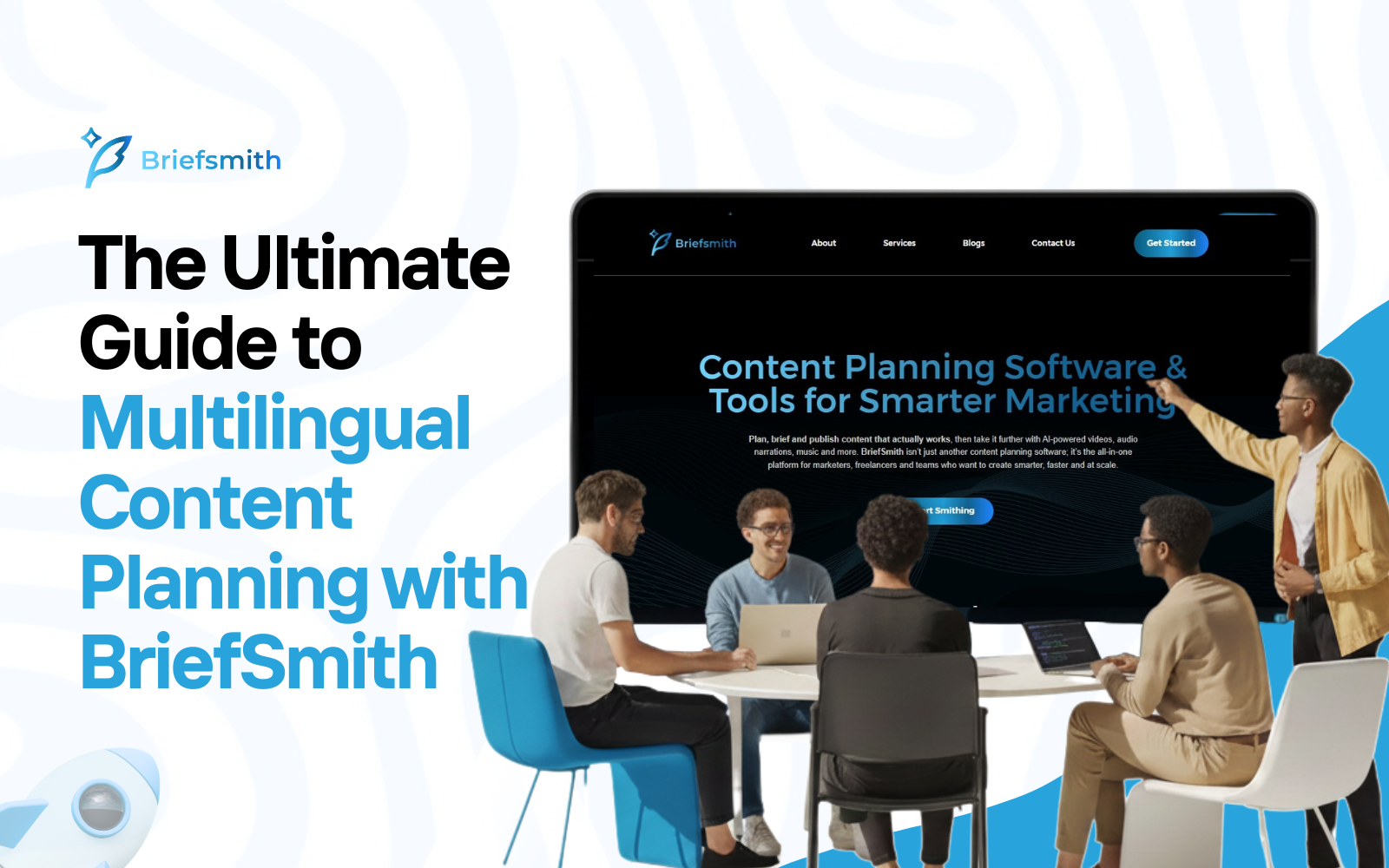Why ‘Best Content Planning Tools’ Lists Are Broken and How to Choose Smarter

The Rise of “Best Tool” Listicles
Google “best content planning tools” and you’ll drown in listicles. They all look the same:
- A numbered list (sometimes 10 tools, sometimes 50).
- A paragraph lifted from the tool’s homepage.
- Maybe a pros/cons bullet list.
The problem? These posts aren’t really designed to help you make a decision. They’re designed to capture search traffic and rank on Google.
That’s why you’ll often see tools recommended that clearly don’t belong in the same category. A massive enterprise platform like Monday.com gets listed alongside a free Google Sheet template and both are supposedly “the best.”
It’s like comparing a paper notebook to Salesforce. Sure, they both track things, but are they actually serving the same audience? Not really.
If you’re a freelancer wondering what tools are actually worth using, check Tools for Content Writing: What Freelancers Use to Stay Ahead.
Why These Lists Waste Your Time
Let’s break down the issues with these “best tools” lists.
1. Affiliate Marketing Bias
Most of these lists are monetized. That means the order isn’t “best to worst.” It’s “who pays the highest referral commission.”
That’s why you’ll often see:
- Tools that are hard to use ranked #1.
- Free or lower-cost tools pushed down the list.
- Descriptions that sound eerily like marketing copy.
It’s not about your workflow. It’s about their payout.
2. One-Size-Fits-All Recommendations
A solo blogger doesn’t need the same tool as a 50-person marketing department. Yet listicles present everything as if all users have the same needs.
It’s like saying the “best vehicle” is a tie between a bicycle, a pickup truck and a jet. Technically they all move you, but context matters.
3. Outdated or Irrelevant Picks
Some of these articles are updated once a year (if that). By the time you’re reading, half the tools may have pivoted, shut down, or been acquired.
4. No Workflow Insight
Tools don’t exist in isolation. The real value is in how they fit together. But “best of” lists rarely explain how a tool works within a content workflow, from idea generation to publishing.
So you’re left staring at a buffet of logos with no guidance on what actually fits your process.
The Smarter Way to Evaluate Tools
Instead of asking, “What’s the best tool overall?” ask:
- What problem am I actually trying to solve?
- Am I optimizing for speed, collaboration, or SEO results?
- Am I working solo, or managing a team?
- Do I need just planning, or briefs + strategy too?
By filtering based on your real workflow, you’ll cut through 90% of the noise.
Breaking Down Tool Categories
To make this concrete, here are the main categories of content planning tools, with pros, cons and best-fit scenarios.
1. Spreadsheets (Google Sheets, Excel)
- Pros: Free, flexible, everyone knows how to use them.
- Cons: Easy to break, no automation, cluttered at scale.
- Best for: New creators or teams on a tight budget.
Compare with Content Planning Tools vs. Spreadsheets: What Saves You More Time?
2. Project Management Tools (Asana, Trello, Monday)
- Pros: Great for task tracking, deadlines and team visibility.
- Cons: Not content-specific, lots of manual setup.
- Best for: Agencies that already use them across departments.
3. Content-Specific Planning Tools (CoSchedule, Airtable, BriefSmith)
- Pros: Designed around content workflows, briefs, calendars, collaboration.
- Cons: Varies: some tools are bloated, others too niche.
- Best for: Teams or freelancers who want planning + creation in one.
4. SEO-Driven Tools (Surfer SEO, Clearscope)
- Pros: Excellent keyword optimization and content scoring.
- Cons: Expensive, not built for planning calendars.
- Best for: Writers who focus heavily on ranking content.
Notice something? There is no single “best tool.” The best choice depends entirely on your workflow.
Why BriefSmith Fits the Gap
Here’s the problem these categories reveal: most tools cover only one piece of the content puzzle. You need multiple tools just to get from idea -> brief -> draft -> publish.
That’s where BriefSmith fills the gap:
- It generates SEO-focused briefs in minutes.
- It centralizes planning, briefs and collaboration in one place.
- It’s lightweight enough for freelancers, but structured enough for teams.
Instead of juggling spreadsheets for planning, Docs for drafting, Slack for collaboration and Surfer for optimization, you can do the bulk of it in one system.
See how this plays out in From Blank Page to Published Post: A Content Creator’s Planner That Actually Works.
How to Actually Pick a Tool (Framework)
Forget “top 20” lists. Use this framework instead:
-
Define your bottleneck.
- Struggling with consistency? Get a planner.
- Struggling with SEO? Get optimization baked in.
- Struggling with collaboration? Get something team-friendly.
-
Match tool to team size.
- Solo freelancers need lean tools.
- Agencies need structure and permissions.
-
Evaluate integration.
- Can it replace multiple tools?
- Will it play nice with tools you already use?
-
Start small, scale later.
- Don’t adopt five tools at once. Pick one, master it, then layer on.
- Don’t adopt five tools at once. Pick one, master it, then layer on.
A Real-World Example
Imagine two freelancers:
- Freelancer A reads a “best tools” list, signs up for four platforms, gets overwhelmed, cancels three, ends up back in spreadsheets.
- Freelancer B skips the list, identifies their main bottleneck (strategy + briefs), signs up for BriefSmith and immediately streamlines workflow.
Guess who hits deadlines consistently and lands repeat clients?
Why “Best” is Misleading
The word “best” implies there’s a universal winner. But in content planning, context beats rankings every time.
For example:
- Google Sheets might be “best” for a solo creator starting out.
- BriefSmith might be “best” for a freelancer scaling their workload.
- CoSchedule might be “best” for an enterprise marketing team with big budgets.
Which one shows up as #1 in a listicle? Usually, whichever pays the most affiliate commission.
Final Thoughts
The internet doesn’t need another “Top 20 Content Planning Tools” article. What content creators need is clarity on fit, workflow and long-term usability.
Because the truth is:
- The “best tool” isn’t the one at the top of a list.
- It’s the one you’ll actually stick with, week after week.
- And it’s the one that removes bottlenecks instead of adding new ones.
If you’re tired of bloated roundup posts and want a tool that combines briefs, strategy and planning in one place, BriefSmith was built with that in mind.
Next up: The Future of Content Brief Software: Where AI Meets Strategy.



